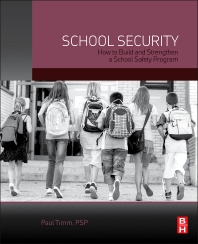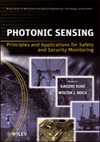Security News -- Mass Notification
Mobile Weather Warning Program Announced

America’s wireless industry is releasing a new nationwide text emergency alert system, Wireless Emergency Alerts, which will warn users when weather threatens, according to an article from the National Oceanic and Atmospheric Administration (NOAA).
The text alert service will be free and automatic , with no need to sign up or download an app, the article says. As long as their cell phones are WEA-capable, users will get wireless alerts for the most dangerous types of weather from NOAA’s National Weather Service no matter where they are, as soon as the new service is available in their area.
NOAA’s NWS will broadcast warnings for weather emergencies that are most dangerous to life and property: tornadoes, flash floods, hurricanes, extreme wind, blizzards and ice storms, tsunamis and dust storms, the article says. However, severe thunderstorm warnings will not be part of the initial rollout of broadcast messages because they are so frequent. Thunderstorm notices will continue to be broadcast by NOAA Weather Radio, media outlets and Internet-based services, the article notes.
According to the article: “If you are at home or traveling with your cell phone through an area where a weather warning has been issued, your phone will pick up alerts broadcast by nearby cell towers. Those towers will broadcast the message much like an AM/FM radio station, and cell phones within range will immediately pick up the signal — provided they are enabled to receive text alerts. When your phone receives a message, it will alert you with a unique ring tone and vibration.
The message will look like a text, but it’s not a traditional text message most people are used to. This text message will automatically pop up on your cell phone’s screen; you won’t have to open it up to read it.
And there’s more good news: Regardless of where you are, this service will send alerts appropriate to your real-time geographic location. For example, if a person with a WEA-capable phone from New Jersey happens to be in Southern California during and after an earthquake, she will receive an ‘Imminent Threat Alert’ on her device.”
The new weather messages are part of the broader Wireless Emergency Alerts initiative – a partnership among the wireless industry, the Federal Communications Commission (FCC) and the Federal Emergency Management Agency, or FEMA, the article says. NOAA’s National Weather Service is one of several agencies authorized to send emergency alerts to cell phones through this new system.
These alerts will improve the way the government communicates to the public about hazards that pose a significant threat to life and property, and help people plan for and stay safe when they are at risk for dangerous situations — even in their own homes, according to the NOAA article. Users might also receive messages regarding Amber alerts, local hazards (e.g., chemical spills) and even national emergencies.
Also according to the article, “The Wireless Emergency Alert system relies on ‘best-effort’ networks, so delivery of alerts at a given place and time is not guaranteed. The new alert system is not a replacement for other alert systems, and you should not rely on it as a sole source of emergency information. A weather alert sent through WEA is intended to notify the public that a warning has been issued and that you should seek additional information. Remember: Not all phones are capable of receiving Wireless Emergency Alerts.
“Cell service customers can opt out of weather alerts, but we strongly discourage you from doing so. These weather alerts are a vital public service that ultimately helps America become a more weather-ready nation. Armed with late-breaking weather warnings, people will have the timely information they need to make smart decisions about how to protect themselves, their families, their friends and neighbors, and their personal property.”
Looking for a reprint of this article?
From high-res PDFs to custom plaques, order your copy today!







